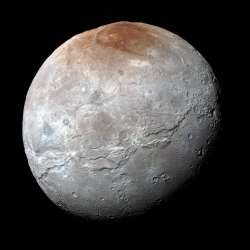New Horizons mission spots possible clouds on Pluto, claims NASA research
After the discovery of layers of interesting fogs a year ago, the New Horizons spacecraft has now claimed to have identified some hints of clouds on Pluto. "We're excited about the exploration ahead for New

After the discovery of layers of interesting fogs a year ago, the New Horizons spacecraft has now claimed to have identified some hints of clouds on Pluto.
"We're excited about the exploration ahead for New Horizons, and also about what we are still discovering from Pluto flyby data," said Alan Stern, principal investigator from Southwest Research Institute in Boulder, Colorado.
Stern said Pluto's complex, layered atmosphere is hazy and appears to be mostly free of clouds, but the team has spied a handful of potential clouds in images taken with New Horizons' cameras.
"If there are clouds, it would mean the weather on Pluto is even more complex than we imagined," Stern said.
Scientists already knew from telescope observations that Pluto's icy surface below that atmosphere varied widely in brightness.
Data from the flyby not only confirms that, it also shows that the brightest areas (such as sections of Pluto's large heart-shaped region) are among the most reflective in the solar system.
"That brightness indicates surface activity," said Bonnie Buratti, a science team co-investigator from NASA's Jet Propulsion Laboratory in Pasadena.
While Pluto shows many kinds of activity, one surface process apparently missing is landslides.
Surprisingly, though, they have been spotted on Pluto's largest moon, Charon, itself some 750 miles (1,200 kilometres) across.
The scientists also revealed that New Horizons is set to fly past 2014 MU69 -- a Kuiper Belt object currently about 1.6 billion kilometres beyond Pluto -- on January 1, 2019.
Hubble Space Telescope data suggests that the distant object is as red, if not redder, than Pluto.
The New Horizons spacecraft is currently 5.5 billion kilometres from Earth and about 540 million kilometres beyond Pluto, speeding away from the sun at about 14 kilometres every second.
The findings were discussed earlier this week at the American Astronomical Society Division for Planetary Sciences (DPS) and European Planetary Science Congress (EPSC) in Pasadena, California.
(With inputs from IANS)